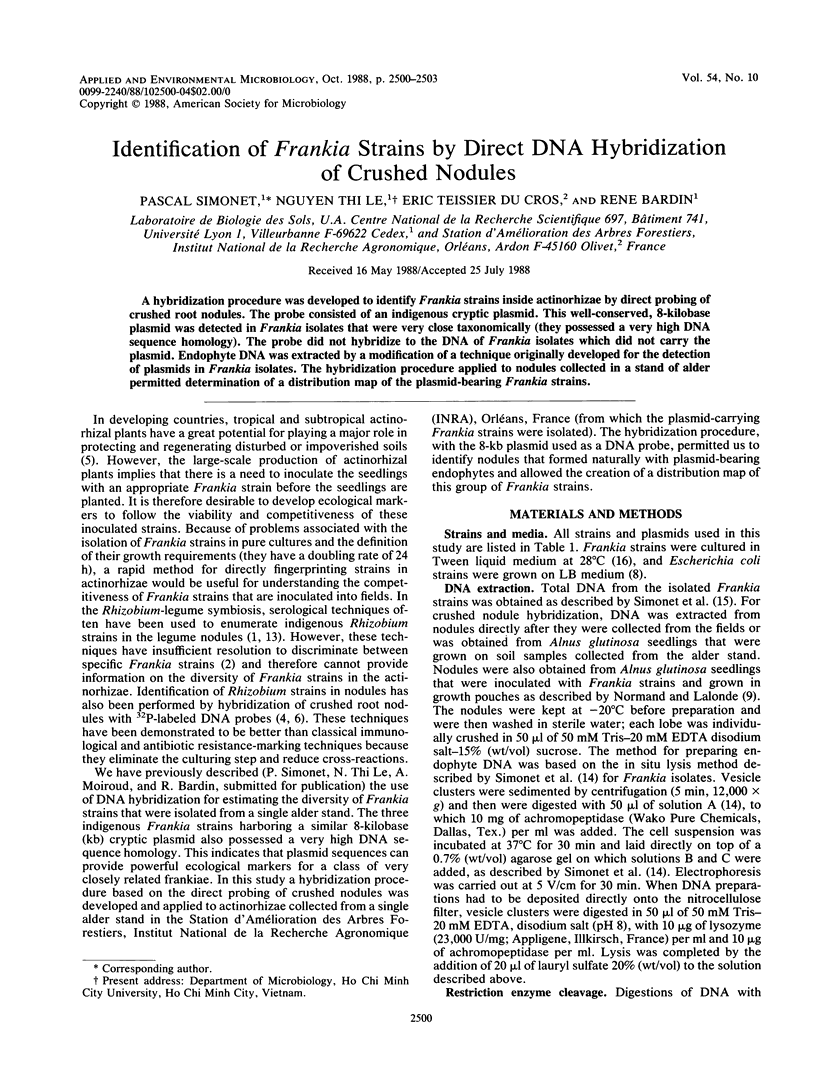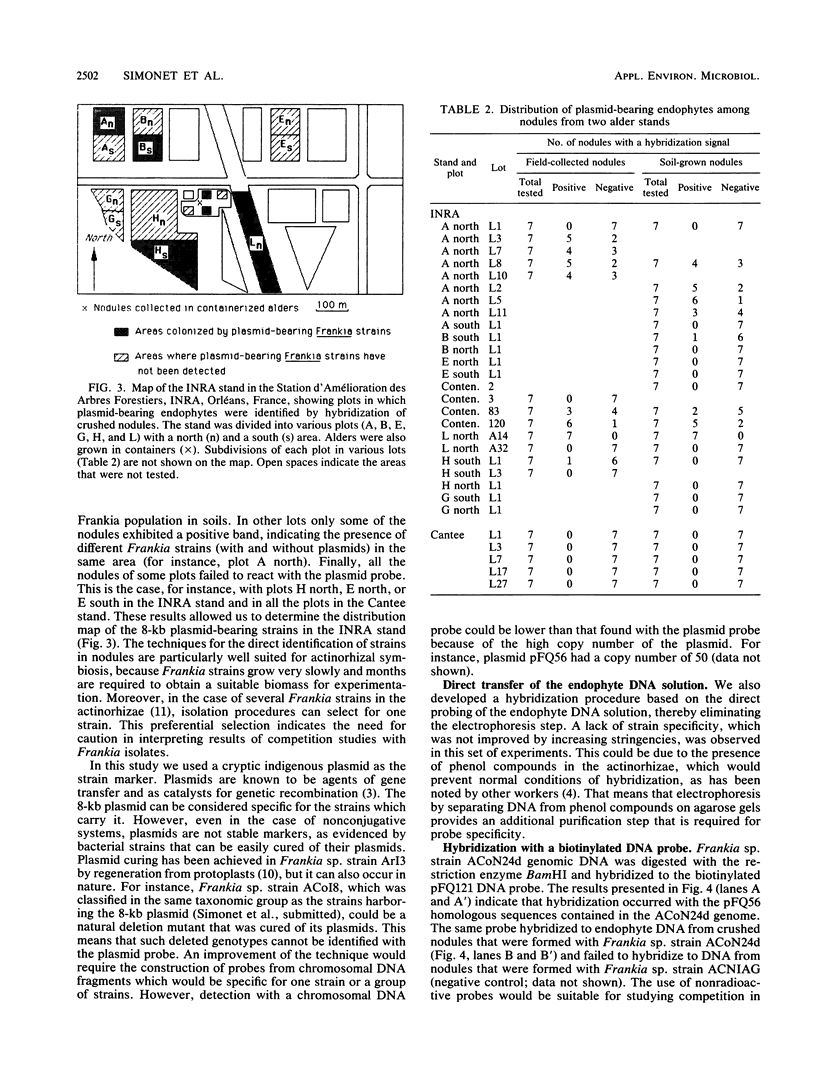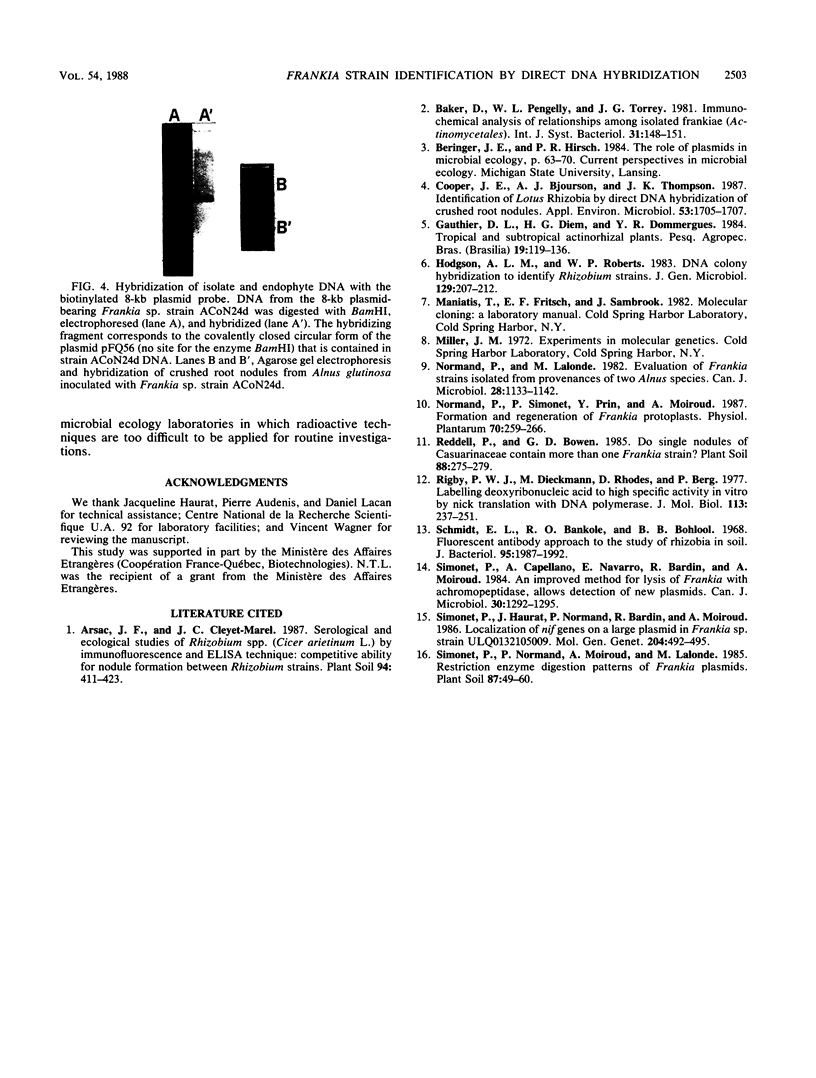Abstract
A hybridization procedure was developed to identify Frankia strains inside actinorhizae by direct probing of crushed root nodules. The probe consisted of an indigenous cryptic plasmid. This well-conserved, 8-kilobase plasmid was detected in Frankia isolates that were very close taxonomically (they possessed a very high DNA sequence homology). The probe did not hybridize to the DNA of Frankia isolates which did not carry the plasmid. Endophyte DNA was extracted by a modification of a technique originally developed for the detection of plasmids in Frankia isolates. The hybridization procedure applied to nodules collected in a stand of alder permitted determination of a distribution map of the plasmid-bearing Frankia strains.
Full text
PDF



Images in this article
Selected References
These references are in PubMed. This may not be the complete list of references from this article.
- Cooper J. E., Bjourson A. J., Thompson J. K. Identification of lotus rhizobia by direct DNA hybridization of crushed root nodules. Appl Environ Microbiol. 1987 Jul;53(7):1705–1707. doi: 10.1128/aem.53.7.1705-1707.1987. [DOI] [PMC free article] [PubMed] [Google Scholar]
- Rigby P. W., Dieckmann M., Rhodes C., Berg P. Labeling deoxyribonucleic acid to high specific activity in vitro by nick translation with DNA polymerase I. J Mol Biol. 1977 Jun 15;113(1):237–251. doi: 10.1016/0022-2836(77)90052-3. [DOI] [PubMed] [Google Scholar]
- Schmidt E. L., Bakole R. O., Bohlool B. B. Fluorescent-antibody approach to study of rhizobia in soil. J Bacteriol. 1968 Jun;95(6):1987–1992. doi: 10.1128/jb.95.6.1987-1992.1968. [DOI] [PMC free article] [PubMed] [Google Scholar]





